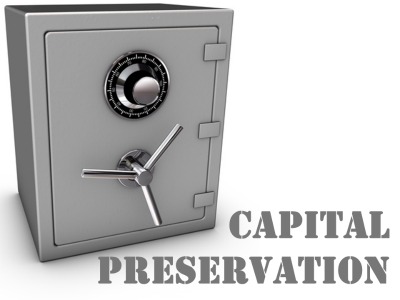Capital Preservation:
Survival Instincts for Your Money
 Lets start with what capital preservation is NOT. It's NOT safe investing. It's NOT putting all your money into a savings account or under your mattress. And it's most definitely NOT a one time thing.
Lets start with what capital preservation is NOT. It's NOT safe investing. It's NOT putting all your money into a savings account or under your mattress. And it's most definitely NOT a one time thing.
That said, it's rarely talked about unless times are tough. Maybe that's why you're here today. So lets start the discussion!
Capital is used to purchase assets. Your capital represents your purchasing power; your ability to buy. From a personal finance perspective, think of it as your cash; both in profit form (net income in your income statement) and asset form (savings, checking, and investing accounts in your balance sheet). It's the hard earned money you have after paying all your bills.
Preservation is the act of protecting something from loss.
So capital preservation is the act of protecting your net income and your assets, and thereby your purchasing power. In other words, it's a practice; one that ensures no single event, position, trade, or expense, no matter how big, can impact your ability to create a profit and/or use that profit to buy things.
Why Practice Capital Preservation?
Tactically, recovering losses isn't easy (see my page on compound interest). Capital preservation helps you limit the impact of losing in the first place.Strategically, investing one of the only ways that the 99% have a chance at "retirement" in the traditional sense. It's a drawn out process, and we make small, seemingly insignificant contributions over a long span of time. And human beings are terrible at this type of planning.
So if you're going to win the long game, you've got to pace yourself. That's essentially what capital preservation allows you to do:
- Keep more of what you're getting / generating profits
- If you live from paycheck to paycheck, you have no net income or profit
- If you have no profit, you have no capital to invest
- If you have no captial to invest, you can't grow your accounts
- Keep more of what you've already got / protecting from losses
- If you don't control your losses, you have no net income or profit
- If you have no profit, you have no capital to invest
- If you have no captial to invest, you can't grow your accounts
- If you can't grow your accounts, you'll immediately lose the ability to buy things once you stop getting that paycheck
How to Practice Capital Preservation?
If we expand on the cashflow reference in the introduction, we want to preserve as much of our income as possible; to have it flow past our expenses and liabilities, down into the asset column of our balance sheet.In the world of personal finance, we're faced with many other types of losses...most of which offer ZERO chance of reward. These losses can come in the form of day to day expenses, commissions, fees, taxes, interest payments, inflation, deflation, bid/ask spreads, getting fired, accidents; the list goes on and on.
So you should ALWAYS practice capital preservation; use it in all your accounts, investing or otherwise.
On the income and expense side, fon't pay ATM fees or monthly maintenance fees on checking accounts. Don't keep balances on high interest rate credit cards, or get high interest rate loans for things that depreciate like cars.
As you start to build your assets, watch the minimums. Banks, and even some brokers, will charge you with maintenance fees if you don't maintain a minimum balance. At one time, I had an account that would charge $25 per month if my AVERAGE balance fell below a certain threshold! That could be up to $300 per year! Needless to say, I preserved my capital by moving it elsewhere.
As you succeed, the minimums fade from view, and you'll need to start watching the maximums. The FDIC and SIPC offer some protection for your accounts, but those protections have limits and conditions. Use portfolio sizing to address this risk.
When you're buying an investment, make sure that no single position can destroy your account. Use position sizing to address this risk. And make sure that the loss on any trade never exceeds 7%.


